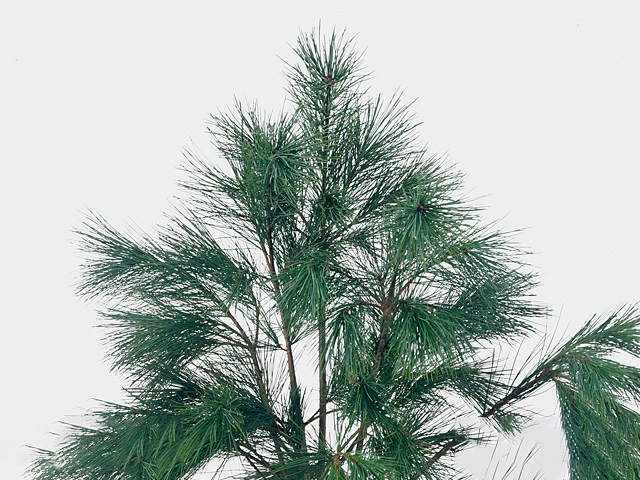Pinus strobus per bunch

| Light conditions | Sunny |
| Moisture requirements | Well-drained; Normal |
The Pinus strobus, commonly known as the Eastern White Pine or the Weymouth Pine, is a majestic tree that can add beauty and value to any landscape. With its tall stature and feathery foliage, this tree is a favorite among homeowners and arborists alike.
Also known as the White Pine, this species is native to the eastern regions of North America, particularly in the United States and Canada. It is highly adaptable and can thrive in a variety of soil types, making it a popular choice for many gardens and parks.
One of the key factors to consider when planting this species is the light conditions it requires. Eastern White Pines thrive in sunny locations, as they require ample sunlight to photosynthesize and grow. It is best to ensure that the tree has access to direct sunlight for at least six hours a day to promote healthy growth and development.
In terms of moisture requirements, Eastern White Pines prefer well-drained soil. These trees do not tolerate waterlogged or swampy soil conditions, as they are susceptible to root rot and other diseases. It is important to provide proper drainage to prevent water from accumulating around the tree's roots. Additionally, regular watering is necessary, especially during dry spells, to ensure the tree receives adequate moisture.
Eastern White Pines are known for their rapid growth and can reach heights of up to 80 feet or more. They have long, slender needles that grow in bunches and can vary in color from bright green to a bluish-green hue. The tree's bark is smooth and grayish-brown in color, providing an attractive contrast to its lush foliage.
In addition to their aesthetic appeal, Eastern White Pines also offer a range of practical benefits. They provide excellent shade and wind resistance, making them ideal for creating natural windbreaks or privacy screens. These trees also help improve air quality by removing pollutants and producing oxygen.
Another advantage of planting Eastern White Pines is their ability to attract wildlife. The tree's dense foliage provides a safe habitat for birds, squirrels, and other small animals. The abundance of pine cones that the tree produces not only adds to its visual appeal but also serves as a food source for various wildlife species.
When it comes to maintenance, Eastern White Pines are relatively low-maintenance trees. They are generally resistant to pests and diseases, reducing the need for regular treatments. However, it is still important to monitor the tree for any signs of disease or stress and take appropriate action if needed.
In conclusion, the Pinus strobus or Eastern White Pine is a beautiful and versatile tree that can enhance any landscape. With its tolerant nature and attractive features, it is no wonder why it remains a popular choice among homeowners and landscapers. By providing the right amount of sunlight and well-drained soil, this tree can thrive and bring years of enjoyment to its surroundings.
Market availability index by month:
| Jan. | Feb. | Mar. | Apr. | May | Jun. | Jul. | Aug. | Sep. | Oct. | Nov. | Dec. |
|---|---|---|---|---|---|---|---|---|---|---|---|
| 4 | 4 | 3 | 3 | 4 | 3 | 3 | 3 | 3 | 3 | 3 | 3 |